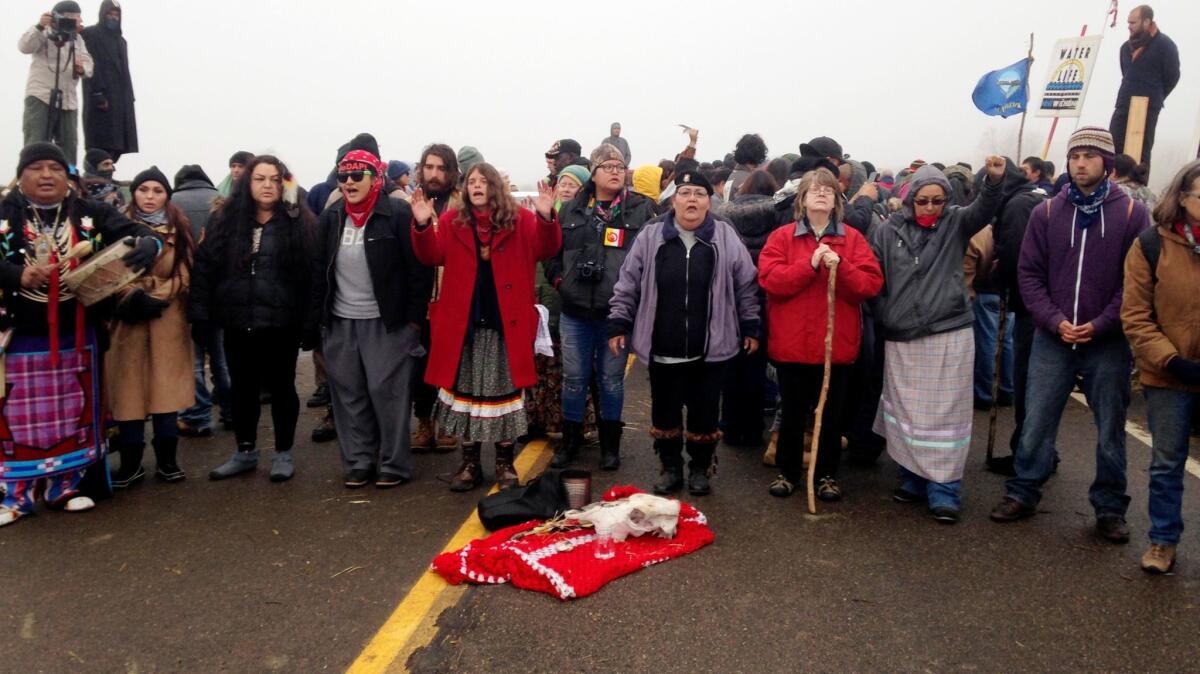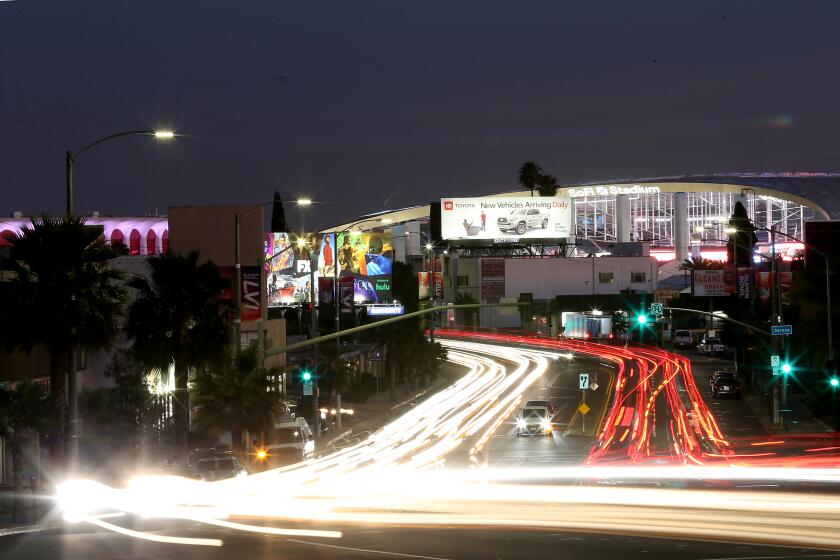Op-Ed: The protests at Standing Rock are necessary. What happened at Malheur was nonsense.

The rancher-militia occupation last January at Malheur National Wildlife Refuge in eastern Oregon, and the ongoing Native American occupation of the site of a proposed oil pipeline near Standing Rock Sioux Reservation in the Dakotas make for interesting comparisons. On Thursday, for example, the same day that seven of the Malheur militia members were found not guilty of nearly all charges related to the Oregon standoff, 141 protesters in North Dakota were arrested by a law enforcement officers from at least seven states, using military-grade, anti-riot technology.
Watching the events unfold one after the other revealed a glaring racial double standard. It also showed a profound difference in what is at stake in the two movements.
In Oregon, white ranchers — dressed as cowboys, armed to the teeth, claiming to be clothed in the Constitution — protested what they consider to be creeping government tyranny, in the form of federal control of western lands. Law enforcement let them come and go at will, and sought not to provokethem, giving them time and space to stage their “insurrection.” By contrast, the attempt to derail the Dakota Access Pipeline was met by a stunning show of force: dogs, helicopters, LRAD sound cannons, military vehicles and hundreds of police officers.
Whatever bedtime stories the Malheur militia members may tell themselves... Western ranchers and settlers aren’t the victims of the government.
White privilege — or white impunity, perhaps — is an unavoidable explanation for the contrast. One man did die in Oregon, on a road outside the refuge and seemingly because he appeared to think the authorities didn’t mean it when they pointed their guns at him. But the last of the occupiers were represented in negotiations by a Nevada state representative. Native Americans with drums and prayer sticks on their own land were not so indulged. That’s one reason the racial component is best understood not just as a double standard, but a single, continuous policy that defines American history.
It was the federal government that removed native peoples in the first place, opening up eastern Oregon in the 1870s to economic development by white ranchers. When the leaders of the rancher militia, the Bundy family, call on American nationalism to justify their stand, they are in fact calling on a very real history of racial injustice.
Nor is it a coincidence that the contested Dakota Access Pipeline was moved downstream toward the reservation from its initial proposed location upstream of majority-white Bismarck, N.D. Protecting the Missouri River and the water supply of the capital of the state from potential oil leaks didn’t require a popular uprising because “public interest” has never not been defined in white terms.
But as important as the racial issues are, they may mask other aspects of the two movements. The Bundys’ campaign is farcical, a protest against an imaginary threat conducted in symbolic terms. The Standing Rock protest is concrete; it seeks to stop a real pipeline and a real environmental threat.
The Malheur refuge occupiers were treated so gingerly in part because it was winter, because the place was so isolated, and because little — in the eyes of the U.S. government — was actually at stake. By contrast, the government sees the Dakota Access Pipeline as an integral part of our national energy policy. Homeland Security classifies pipelines as critical infrastructure, potentially making it possible to prosecute the protesters as terrorists.
This difference has to be emphasized: The Native American protesters are standing in the way of one of presidential candidate Hillary Clinton’s priorities when she was head of the State Department, the development and expansion of natural gas infrastructure. And though Clinton has occasionally opposed pipeline projects, such as the now-defunct Keystone XL, that opposition has been lukewarm at best. Now it is hard to hear much support for environmental justice or native sovereignty in her call for “a path forward that serves the broadest public interest.” The shibboleth of “energy independence” requires expanded fracking, natural gas development — and the Dakota pipeline.
Even casual observers can tell that the Bundy family is well-practiced at political theater. One would be hard-pressed to find Brooklyn millennials who take as many selfies and post as many video-blogs as they do; keeping up with their self-documentation on Facebook is exhausting. Despite the Thursday acquittals, the Bundys and their followers surely did conspire to prevent federal employees from doing their jobs, and they obviously and flagrantly brought firearms onto federal property, as charged. But the refuge was essentially empty when they occupied it; nothing was in play there except bird watching and conservation. Wildlife sanctuaries aren’t much eyed by Homeland Security and oil companies.
Nowhere is the essential fraud of the Bundy protest more visible than in its attempts to adopt and co-opt native histories of dispossession. The Bundys have styled themselves as indigenous people being pushed off their land. A recent Bundy Ranch Facebook post, for example, used Standing Rock’s now viral hashtag, #waterislife, and there have been occasional confused postings about reaching out to the Native American protesters.
Whatever bedtime stories the Malheur militia members may tell themselves — and the tens of thousands who follow them on social media — Western ranchers and settlers aren’t the victims of the government. In fact, they’ve been the primary beneficiaries of its land-use policies — water and irrigation policies as well as grazing rights and mineral rights. Their grievances are nonsense by comparison with the Standing Rock Sioux; their protests are self-aggrandizing spectacles, without substance.
Water, however, is substantial, and it is a good part of what is at issue in the Dakotas. Though it will be the Sioux who suffer in the short term from the pipeline and what it carries, we all live downstream eventually. If you understand that global warming is real, it is pertinent that no one is fighting it more directly and consequentially than the Standing Rock protesters.
The Bundy family and their followers are playing dress-up and putting on historical re-enactments. The Standing Rock Sioux are fighting for the survival of the planet. Which side are you on?
Aaron Bady is an editor at the New Inquiry. He lives in Oakland.
Follow the Opinion section on Twitter @latimesopinionand Facebook
MORE FROM OPINION
Why are environmental groups lining up against Washington’s carbon tax initiative?
Donald J. Trump’s concession speech, imagined
L.A.’s March ballot will be a collision of marijuana interests
More to Read
A cure for the common opinion
Get thought-provoking perspectives with our weekly newsletter.
You may occasionally receive promotional content from the Los Angeles Times.






